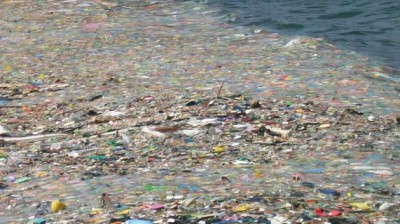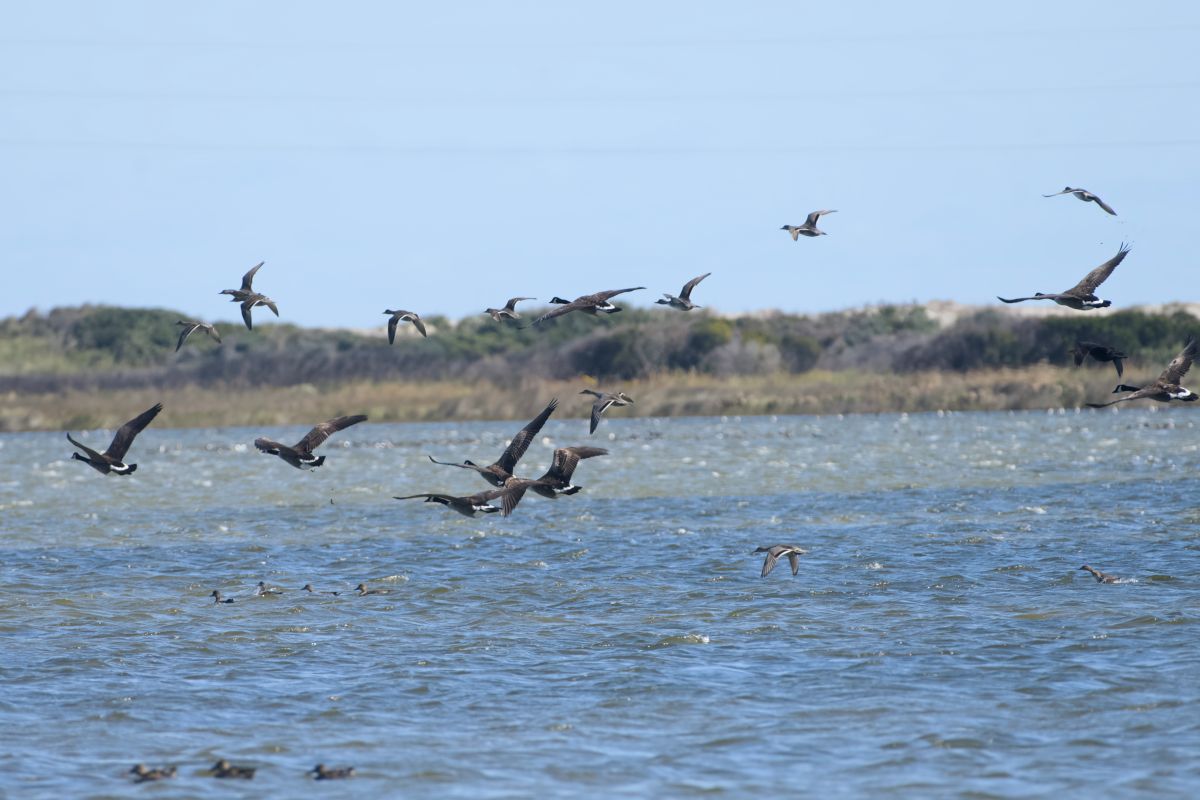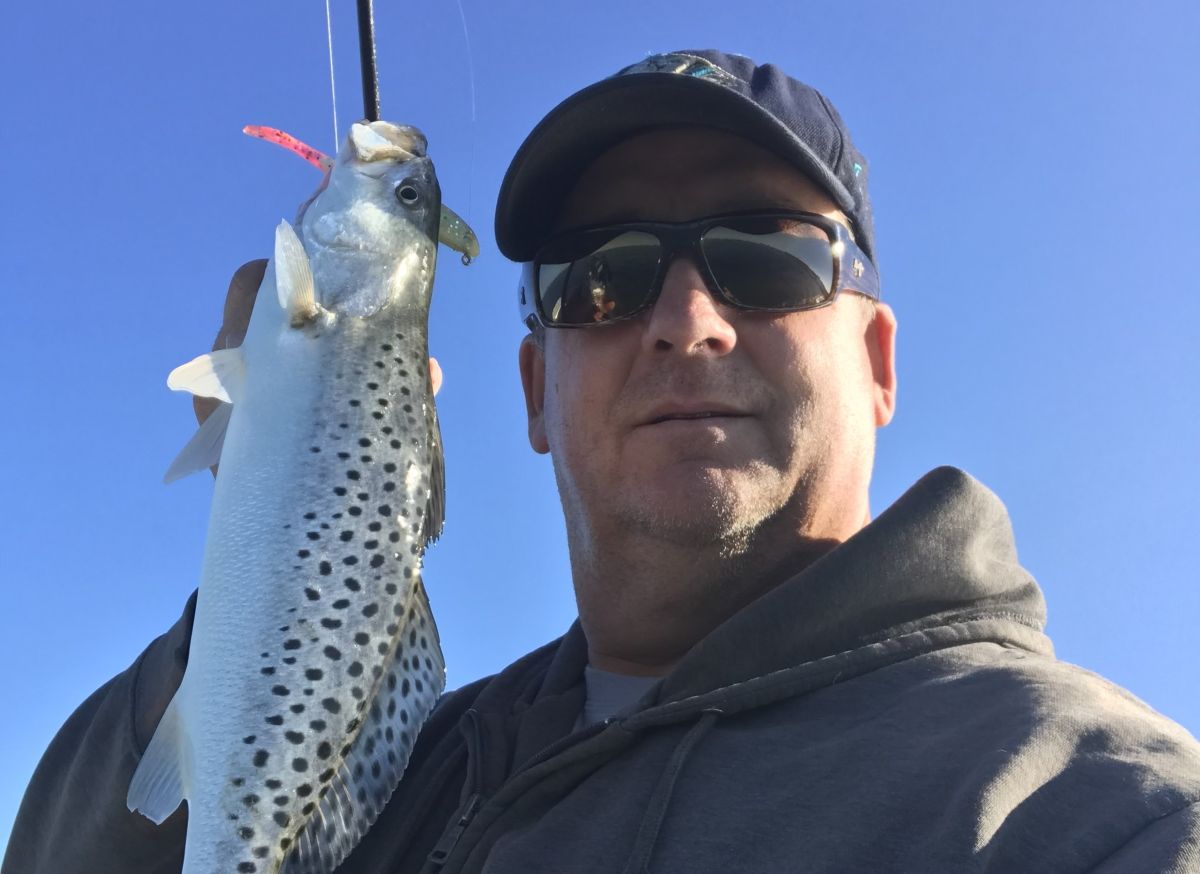The first time I ever traveled to Panama, I found myself posted up on the north coast and purposefully lost in the labyrinth of islands and mangroves and coral reefs that cause waves to break big and heavy. Splitting time between photographing poison dart frogs on deserted islands and red-billed tropic birds nesting on a giant rock in the ocean, it felt as though I had discovered a new world.
Not even Columbus suspected as much when he stumbled upon this archipelago in 1502 and named the whole of the place Bocas del Toro. For me, however, I might as well have been on the heels of Percy Fawcett. Engulfed in the explosion of life that is the lowland tropics and associated coral reefs, every turn was a new discovery, new islands, new species.
Supporter Spotlight
As we threaded our way down a river toward the ocean in a mighty little panga during the heat of the day, I set back on the floor of the skiff with sweat drenching a scarf around my already sunburnt neck. Staring up into the canopy of the passing rainforest, I watched as impossible numbers of three-toed sloths floated past in cecropia trees. We were in a notoriously remote stretch of Panama’s coast. Narcotics traffickers frequented this place, using the island as a way station when moving up the coast from Colombia. The Panamanian government’s reach did not extend to this region. It was effectively ungoverned. Natives still pulled themselves along these waters in dugout canoes. This was the real deal.
Nearing the mouth, where the river spilled her secrets into blue waters of the tropical Atlantic, we wound our way around shoals to slide the bow of our boat onto the sandy backside of a spit that demarcated river from ocean. If ever I felt as though I was moving through a literal Garden of Eden, it was now, it was here. I had no idea how far from civilization I was at this point. There had been no sign of humanity the entire day. No gringo fishermen on expensive charters garbed in synthetic everything. No random native farmer tending their odd little stands of banana trees or scraggly and emaciated cattle. Climbing up and over the berm of the spit, I expected a postcard. What I found was a trash heap.
Bleach bottles and old toothbrushes and flip-flops and the refuse of our disposable world in all shapes and sizes and colors littered the beach. Everything plastic you can conceive of was washed and tossed in with the natural flotsam and jetsam of the wrack line. Most conspicuous of all were the strange rubber shoes called Crocs. They were everywhere – a veritable rainbow. I had reached the edge of the world only to find myself drowning in rubber clown shoes.
I turned to my guide. “It washes up,” he said. “Most of it is probably from cruise ships and sailboats. Maybe the narcos, I suppose. Everyone’s trash seems to make its way on to the beaches here.”
Trying to find a bit of levity, he attempted to make light of the situation. “You know, sometimes there are smashed up crates of drugs. Everybody knows somebody who has found stuff on the beaches of Panama. Hey, you know what we call it when we find marijuana? Seaweed!”
Supporter Spotlight
This is the state of our coasts the world over. Flotsam and jetsam no longer look like Sargasso weed and driftwood. Today, it’s Styrofoam and plastics, parts of boats, trash washed down river or overboard and onto shore, or most nefariously, garbage that was just flat-out dumped into the ocean – out of sight out of mind, the philosophy of cruise ships the world over.
The hard-hitting reality of life on Earth today is there are exceedingly fewer places where one can escape the side effects of our civilization in the ocean world. On the one hand, we all kind of know this already. From shipping traffic to commercial fishing to garbage patches, we have spent the last century tightening our vice-like grip on the world’s oceans.
Industrialization has allowed us to spread out across our blue planet chasing fish stocks and expanding global trade in ways that were simply unimaginable two centuries ago. But to say that there are few places in the oceans not impacted by humans has always been anecdotal at best. I can tell stories of trash-heaped beaches in Panama, of picking up Aquafina bottles on remote coastlines in Alaska, or of the “bay barf” that comes spewing out of the Chesapeake and onto the beaches of Carova after every nor’easter. But stories are not data. Statistics are not built this way. There has never been any sort of quantitative facts to back up these anecdotes – until now.

Meet Kendall Jones. He is a doctoral researcher at Queensland University in Australia, and as a conservation biologist, also happens to work with the Wildlife Conservation Society. Jones and a team of other researchers decided that it was high time for someone to answer the question of just how much “wilderness” is still left in the sea. The results of which were published this summer in the July edition of the journal Current Biology.
This was a sizable task. Poring over the results of countless studies, in what is known as a meta-data analysis, Jones and team began to compile what we might call a 10,000-foot view of the state of the oceans. But to do this, researchers first had to identify what exactly constituted as wilderness to begin with.
In 1964, Howard Zahniser put pen to paper and crafted what would become the Wilderness Act. In this, he defined wilderness as “an area where the earth and its community of life are untrammeled by man, where man himself is a visitor who does not remain.” On the one hand, we can see this as being the “natural” state of nature. On the other hand, it really has everything to do with “modern” humans and the general lack of impact we have had on a place. Zahniser’s definition goes on to elaborate that a wilderness area “generally appears to have been affected primarily by the forces of nature, with the imprint of man’s work substantially unnoticeable.”
With a working definition in hand of what constitutes wilderness, Jones and crew set about to identify 19 markers that constitute as “the imprint of man’s work” by having a substantial impact on marine habitats. These markers, or really stressors, included things like fertilizer run off, heavy shipping traffic, and intensive commercial fishing – especially demersal fishing, which is done on or near the bottom. Any one of these stressors makes a big difference on the health and wealth of the world’s oceans.
We should probably note here that climate change was NOT included.
Once these 19 stressors were identified, the team of researchers were able to set about analyzing the known data on these things. Where are the primary shipping lanes? Where are the garbage patches? The dead zones? Where do fleets of commercial fishermen hit hard? Poring over the data, Jones identified those areas that sit within the bottom 10 percent for being impacted by each of these individual stressors, and then the bottom 10 percent for all those stressors combined. This part is important. The areas that Jones and his team identified as being marine wilderness are not necessarily free from human impact. They are simply those areas that are the least affected by our modern civilization. Let’s face it. When plastic bags are being found at the bottom of the Mariana Trench – the deepest place on Earth – looking for a place with zero human impact today would be pointless.

The results of Jones’ study revealed a dismal picture of the world’s oceans: only 13 percent could be classified as marine wilderness today.
“Almost all of that wilderness is located in the Arctic, the Antarctic or around remote, Pacific Island nations,” said Jones. These are distant places. Places where human impact is at its minimal due to the logistics of access. In coastal areas of the Northern Hemisphere, you know, where most people live, pristine waters are practically non-existent.
But to add insult to injury here, of the total area identified by Jones and his team to be wilderness, only 4 percent of that has any sort of marine protections – none of which can be found anywhere near North Carolina. It’s important not to misunderstand this point.
Technically, we do have a few “no-take” zones around the world, where all fishing is banned in places like the Bahamas’ Exuma Cays. However, when all no-take zones are combined worldwide they only protect a total of one-ten-thousandths of a percent of the world’s oceans according to the American Natural History Museum. None of which fall inside of those areas identified by Kendall Jones. Meaning, our no-take zones are a fabulous idea, but they are still being degraded by one or more of the other 18 stressors to the point of humans having a significant impact otherwise.
When I stand on the foreshore in Carova Beach, early enough in the morning so I am not dodging wild horse tours and the battalion of tourists in their four-wheel-drive vehicles of course, I spy dolphins hunting along the edge of sandbars and maybe “rain minnows” being chased by young bluefish in the emerald green and phytoplankton rich surf. This looks good to me. I breathe deep, filling lungs with briny air. Negatively charged ions enter my bloodstream, facilitating oxygen to my brain, peaking serotonin levels, winching a smile across my face. Better life through chemistry. Pelicans fly by. Sanderlings flutter about. To the south is Cape Hatteras National Seashore – eventually. To my north is False Cape State Park – immediately. Protected tracks of prime barrier island real estate. Life is good, and all appears right in the world. Wilderness you say? It is all a big and vast and beautiful blue wilderness out there.
And yet, this is the illusion. When viewed from the shore, we stand apart from the sea, above it all, as removed as we are from the moon. The same goes for when we float upon its waters, trolling for mahi, trawling for specs, and making an infinite number of assumptions crafted around our own interpretations of a view that extends little further than the length of our nose. But let’s be honest here, my blue mind bliss in the morning is based on six pelicans, 20 sanderlings, the fact that I was able to order a rare tuna steak with Kimchi the night before, and the memory of that one time at Teach’s Hole when I caught a hundred speckled trout from a kayak in a day.
But this is not science. This is not even a grainy and slightly out-of-focus Polaroid snapshot of the big picture. This is the anectodical that all us, from naturalists to commercial fishermen, craft our world views around. And it is all based on what? Memories? An emotional response to a moment? We need more than that.
The hip thing to do here when justifying wilderness is to bog ourselves down in scientific minutia. “Protecting wilderness areas will help preserve large, biologically connected ecosystems; species with large home ranges; and hotspots of functional traits and endemic species. It will also directly benefit humanity by preserving the carbon mitigation and adaptation values of intact marine ecosystems” as Jones’ paper dryly explains.
Translation: Want to keep ordering those tuna steaks? We need marine wilderness as refuges for species like tuna, and other animals with massive home ranges, to safeguard at least a small part of their range and population for them to keep breeding and spreading out like a watershed – the same argument that was made for the creation of Yellowstone by George Bird Grinnell in the 19th century, minus the part about tuna.
Do we all agree that the world is a better place with whales in it? Their ranges overwhelmingly overlap those areas that can still be considered wilderness for a reason: resources. You and I call it food. Science calls it species richness and rarity, and they back it all up with mathematical equations that make me throw up in my mouth just a little bit when I look at them.
But I don’t believe that wilderness needs scientific justification. Why shouldn’t it exist for the sake of existing? Life is better on planet Earth knowing that it does exist, that somewhere out there we haven’t messed everything up, that the mystery of life and wildness and the unknown still unfolds absent of our lusty commercial interests, safe from commodification, protected from the petroleum byproducts the rest of the world is awash in, and without the deafening roar of city sized ships. I think this is something we all want to believe regardless of occupation or political orientation. And it is this final 13 percent that we should all be working toward safeguarding.








